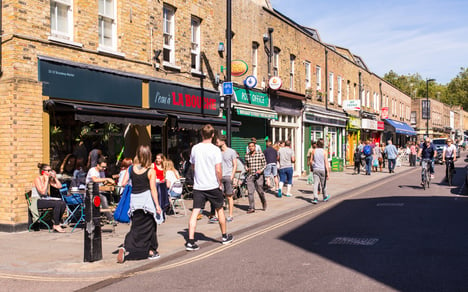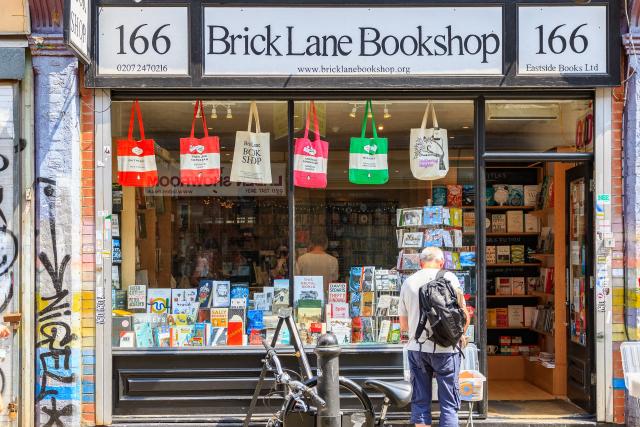Three Unique Opportunities They Can Leverage to Flourish
The past decade has seen the rapid rise of the retail giant and the slow descent of the traditional retailer. The retail landscape has been transformed to such a degree, as to be unrecognisable. From this chaos, however, opportunities for the small, independent retailers are emerging.
The news in 2017 and early 2018 has been dominated with talk of mergers and acquisitions among the retail giants. Online retailer Amazon acquired bricks and mortar Whole Foods; and is now entering the health care industry as well. Tesco is merging with Booker to create the UK’s leading food business. WallMart acquired Jet.com and continues to gobble up technology startups. At the same time, retail technology has drastically changed customers’ expectations, providing them easy access to product information anywhere, at any time and redefining value and convenience.
Current conditions that make it difficult for mid-level retailers are providing a unique opportunity for independent retailers. Increased storefront vacancies, shifts in customer expectations, and innovations in retail technology are providing a rich soil in which boutique brands can grow and thrive.
Reduced Cost for Bricks and Mortar Retail Space Large and medium sized retailers are shuttering shops and consolidating locations, leaving vacant locations in many shopping centres. In their 2017 UK Shopping Centre Insight Report, Cushman and Wakefield cited a five-year average decrease in shopping centre rental performance. This rise in vacancies is driving retail space rent down to manageable levels. Small, independent retailers, who may have avoided the cost of establishing a bricks and mortar space in the past, now have the opportunity to increase their brand exposure and enhance their business model by establishing a physical location.
 Source: Getty Images
Source: Getty Images
Independent retailers are reaping the benefits of lower rents to establish showrooms in key areas, showcasing their services and products without large overhead costs. The British Independent Retailers Association (BIRA) reports that more independent shops opened than closed in the first quarter of 2017. This follows the trend that started in 2015 and continued through 2016, with net increases of 117 and 159 respectively. These retailers stay nimble by maintaining small inventory levels, expanding slowly and strategically, utilising multiple sales channels, and focusing on what their customers are looking for – excellent customer service and in depth product knowledge.
Shifts In Customer Demand Toward Unique Experiences
While online retailers’ have cornered the market on delivering speed, convenience and price, they have not been able to distinguish themselves in terms of experience. No matter how personalised a website might be, the online shopping experience is remote and distanced, focused more on speed and convenience than on connection. Humans are social and experiential. They want the opportunity to connect with their favourite brands in physical spaces. This connection remains important, especially when hands-on interaction is needed to understand how a product works, or to choosing which to buy.
Customers are looking for a sense of community and authenticity, which works to the independent retailer’s advantage. The mid level retailers are limited in their response by out-dated brand practices, the need to push changes to multiple locations, and significant overhead costs. Independent retailers have the opportunity to step in now to meet this shift in demand, delivering unique and creative customer experiences. They offer unique brands, cafes, social events, product workshops, beauty parlours, tailoring, personal stylists or manicure stations, pulling customers off their sofas and away from the e-stores.
Many young people want experiences they can share on social media —whether it’s a trip with friends to a movie screening or a shopping excursion to a trendy shop. Retail as an industry has shifted dramatically toward delivering these social experiences. Shopping centres like Circus West Village are remaking the retail model by selecting small retail partners based on the quality and individuality of the experience they bring. In other areas, independent retailers are settling together, creating their own little high streets filled with an eclectic mix of independent shops and village vibes.
Customer Experience Technology Offerings
E-commerce, omni-channel and customer experience technology have evolved rapidly, bringing consumers round-the- clock access to products and information wherever they go. Technology works both ways, delivering retailers more real-time information on customer demographics and preferences than ever before. This allows them to compete with the retail giants, using their customer insights to tailor their brand and experiences to their target market.
As retail technology reaches the mainstream and becomes affordable, it allows independent retailers to operate at the same level as the large and mid-sized sized retailers. Technology allows even the smallest boutiques to deliver seamless personalisation, mobile readiness and a cohesive omni-channel experience to their customers. Last mile delivery, seamless point of sale solutions, and efficient inventory management deliver the agility needed to navigate the volatile retail market and deliver the experience their customers demand.
It has always been difficult to establish a new brand in the retail market. The risk of failure is high. Yet, with the shift in customer demand, reduced cost for physical space, and innovations in retail technology, many of the traditional barriers to entry are lowered. This has given independent retailers a unique advantage, allowing them flourish in today’s dynamic retail landscape, focusing on delivering creativity, innovation and customer satisfaction.




